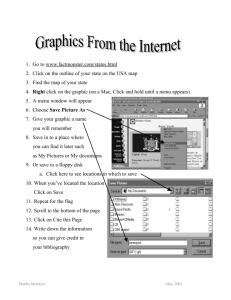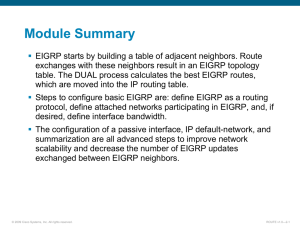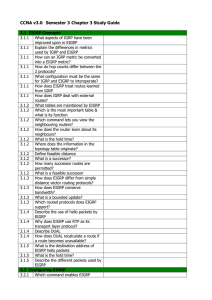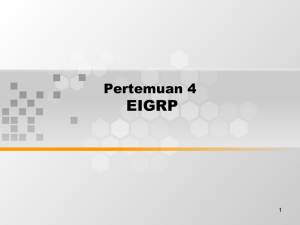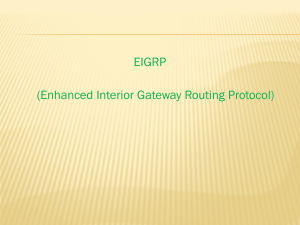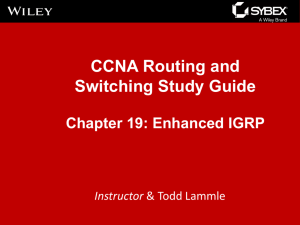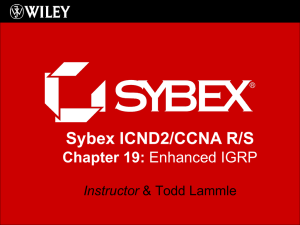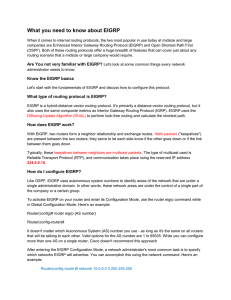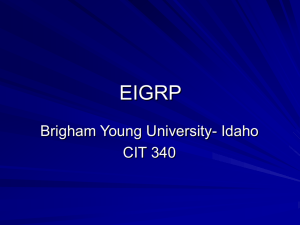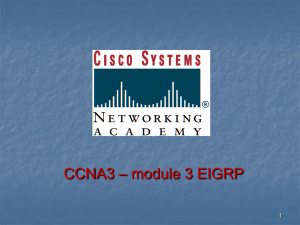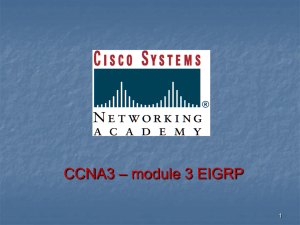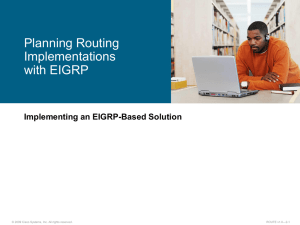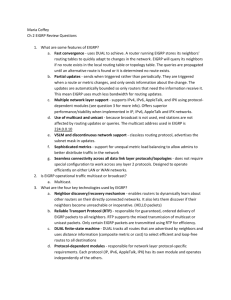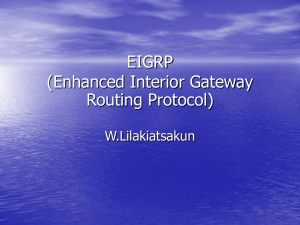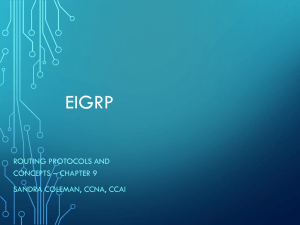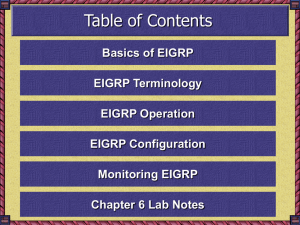EIGRP The main purpose in Cisco's development of EIGRP was to
advertisement
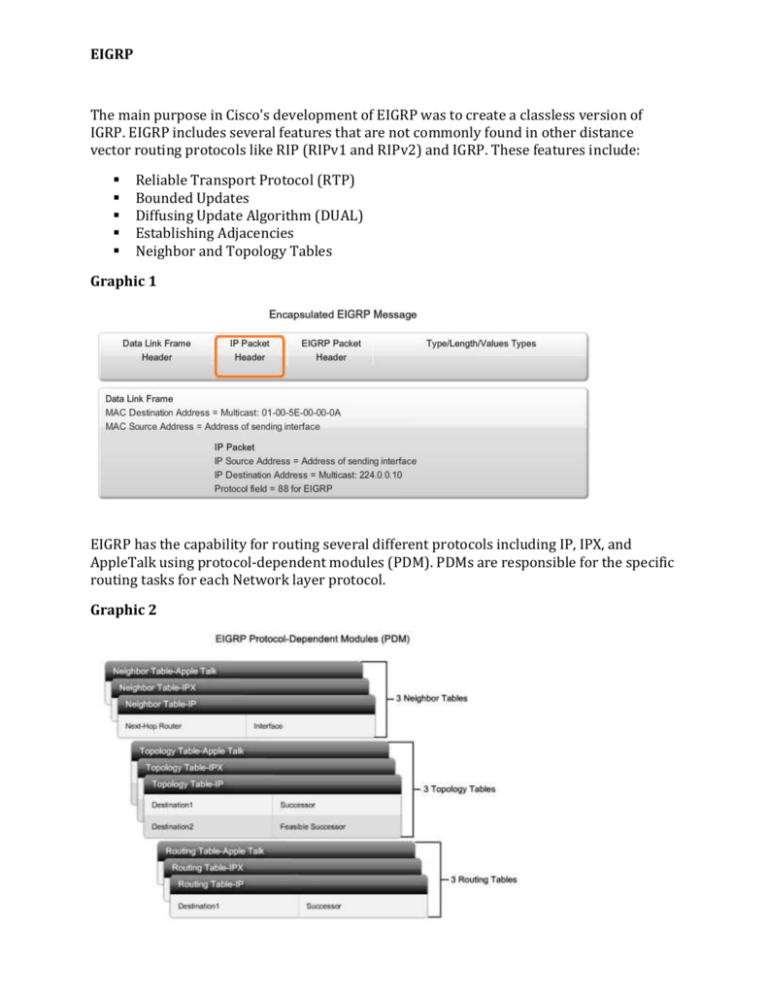
EIGRP The main purpose in Cisco's development of EIGRP was to create a classless version of IGRP. EIGRP includes several features that are not commonly found in other distance vector routing protocols like RIP (RIPv1 and RIPv2) and IGRP. These features include: Reliable Transport Protocol (RTP) Bounded Updates Diffusing Update Algorithm (DUAL) Establishing Adjacencies Neighbor and Topology Tables Graphic 1 EIGRP has the capability for routing several different protocols including IP, IPX, and AppleTalk using protocol-dependent modules (PDM). PDMs are responsible for the specific routing tasks for each Network layer protocol. Graphic 2 Reliable Transport Protocol (RTP) is the protocol used by EIGRP for the delivery and reception of EIGRP packets. EIGRP was designed as a Network layer independent routing protocol; therefore, it cannot use the services of UDP or TCP because IPX and Appletalk do not use protocols from the TCP/IP protocol suite. EIGRP routers discover neighbors and establish adjacencies with neighbor routers using the Hello packet. On most networks EIGRP Hello packets are sent every 5 seconds. On multipoint nonbroadcast multiaccess networks (NBMA) such as X.25, Frame Relay, and ATM interfaces with access links of T1 (1.544 Mbps) or slower, Hellos are unicast every 60 seconds. An EIGRP router assumes that as long as it is receiving Hello packets from a neighbor, the neighbor and its routes remain viable. Graphic 3 Administrative distance (AD) is the trustworthiness (or preference) of the route source. EIGRP has a default administrative distance of 90 for internal routes and 170 for routes imported from an external source, such as default routes. When compared to other interior gateway protocols (IGPs), EIGRP is the most preferred by the Cisco IOS because it has the lowest administrative distance. EIGRP, OSPF, IS-IS, and BGP can all be configured to encrypt and authenticate their routing information. Graphic 4 Graphic 5 Graphic 6 Graphic 7 Graphic 8 Graphic 9 Graphic 10 Graphic 11 Graphic 12 P - This route is in the passive state. When DUAL is not performing its diffusing computations to determine a path for a network, the route will be in a stable mode, known as the passive state. If DUAL is recalculating or searching for a new path, the route will be in an active state. All routes in the topology table should be in the passive state for a stable routing domain. DUAL will display an A if the route is "Active," which is a CCNP-level troubleshooting issue. Graphic 13 Graphic 14 Graphic 15 Graphic 16 Graphic 17



